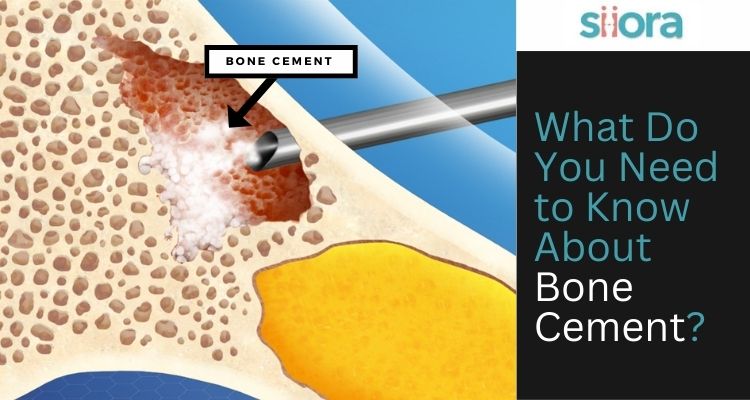
Ever wondered what keeps that shiny new hip or knee replacement securely in place? The answer might surprise you. It is because of a remarkable material called bone cement. It plays a crucial role in the success of these life-changing surgeries.
Bone cement, also known as polymethylmethacrylate (PMMA), isn't actually cement in the traditional sense. It's a specially formulated acrylic that hardens within the body, acting as a strong anchor between the artificial joint or Orthopaedic Implants and the surrounding bone. Think of it as a biocompatible grout, ensuring the implant fits snugly and functions smoothly.
A Brief History of Bone Cement
The story of bone cement goes back further than you might think. The main component, PMMA, was first used in the 1940s in plastic surgery to close skull gaps. Its excellent compatibility with human tissue paved the way for its revolutionary use in orthopedic surgery during the 1950s. This innovation transformed joint replacement procedures, leading to a surge in their success rates and a dramatic improvement in patient mobility and quality of life.
How Does Bone Cement Work?
Bone cement comes in two parts: a powder and a liquid. The powder contains pre-polymerized PMMA, along with other ingredients like contrast agents for X-ray visibility and initiators for hardening. The liquid is primarily methyl methacrylate (MMA) monomer, the building block for PMMA.
When these two components are mixed just before surgery, a fascinating chemical reaction called polymerization takes place. The MMA molecules rapidly link together, forming a strong and stable PMMA structure. This process has a specific timeframe - the cement reaches a doughy consistency ideal for application, then gradually hardens to form a solid implant anchor.
What Are the Benefits of Bone Cement?
Bone cement offers several advantages in joint replacement surgery:
Stability
It creates a firm connection between the prosthesis and the bone, preventing loosening and potential implant failure. This stability translates to a longer lifespan for the artificial joint.
Reduced Stress
By filling gaps and creating a uniform interface, bone cement distributes stress more evenly across the implant and surrounding bone. This helps prevent bone damage and discomfort.
Pain Relief
A stable implant translates to better pain management after surgery.
What Are the Things to Consider for the Use of Bone Cement?
While bone cement is a well-established and highly successful technique, there are a few things to keep in mind:
Bone Quality
The effectiveness of bone cement relies on good quality bone to create a strong bond. In cases of osteoporosis or other bone issues, alternative fixation methods might be considered.
Heat Generation
The polymerization process generates some heat, which can potentially damage surrounding tissues. However, modern bone cements are formulated to minimize this effect.
Long-Term Durability
Over time, the bond between bone cement and bone can deteriorate. This is a factor surgeons consider when determining the suitability of joint replacement for each patient.
The Future of Bone Cement
Research in bone cement continues to evolve. Scientists are exploring ways to improve its longevity and biocompatibility, potentially extending the lifespan of joint replacements even further. Additionally, advancements in bone-bonding materials and techniques might offer alternative options in the future.
To know more about advancements in orthopedic technology and manufacturing, register for the OMTEC Conference 2024.